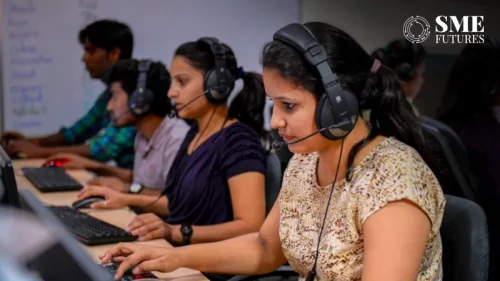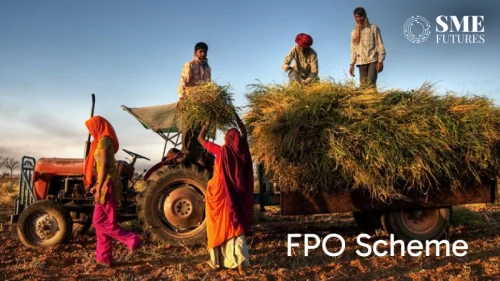With firm religious beliefs and abundant festivities, incenses have always been an indispensable part of all religious functions in India. Even morning routines in India comprise of burning incense sticks made of Nagchampa (Plumeria), Chameli (Jasmine) or Chandan (sandalwood) etc. Hence, India has become one of the largest agarbatti and dhoop manufacturing country.
According to an analysis, agarbatti segment has been growing with a growth rate of 10 per cent in last few years. While, dhoop has also been growing with a constant growth rate on the lower side and expected to grow with over 8 per cent CAGR. Due to the ongoing pandemic crisis, the agarbatti and dhoop industry has also observed some short-term hiccups.
However, the industry now seems to be bouncing back from the initial shock. On the other hand, to empower the sector government has announced various programmes. There will be ten more new industrial regions for the industry on which the government is currently working. These will be set up with proper marketing linkages under SFURTI (Scheme of Fund for Regeneration of Traditional Industries) scheme of the Ministry of MSME at a total cost of about Rs. 50 crores to benefit about 5000 artisans.
While giving emphasis on National Bamboo Mission, Ministry of Micro Small and Medium Enterprises (MSME), has issued new guidelines on 4th September to expand the reach and support to agarbatti artisans involved in the trade. This will be done through training and providing them raw material, marketing, and financial support.
Speaking to SME Futures, Arjun Ranga, President, All India Agarbathi Manufacturers’ Association (AIAMA) and maker of Cycle Agarbattis discussed various issues that the industry is facing and talked about market readiness for meeting demand of the approaching festive season.
Edited excerpts
How has been the impact of economic slump caused due to pandemic on the incense businesses in India as it falls under non-essential commodities?
We completely support the government’s decision to permit only essential goods during the initial stages of lockdown. At that time, food and medicine were most essential. As a result of this, the agarbatti and dhoop industry that employs lakhs had to shut down units for at least two months. Despite that there was no demand contraction.
Except for places of worship, households were buying the product for worship at home. This kept the demand going. However, supply chain was disrupted and this in turn has impacted us greatly. With the easing of restrictions post-unlock 1, businesses have started gaining normalcy. We are hopeful that the industry will reach its pre-COVID levels soon.
What are the major challenges that the sector is facing?
As I mentioned earlier, currently the industry’s major challenge is impaired supply chain and logistics. Another obstacle is availability of good quality raw material and its procurement. This has become a major point of concern lately. If quality raw material is not available on time, the livelihood of five lakh families will be threatened.
Please throw some light on how the agarbatti industry is spearheading the narrative of Atmnirbhar Bharat Abhiyan?
Truly, Agarbatti’s are fragrant ambassadors of India. Around 15,000 tonnes of agarbattis are consumed per month in India, all of which are completely manufactured in India. Apart from key raw material inputs, the entire supply chain and value addition happens in India.
Incense sticks have evolved in many aspects such as in preference of consumers, trends, or innovation. To adapt with this, indigenization became our mantra and today Indian Agarbattis have no other equivalent globally. Also, these are exported to over 160 countries.
In view of PM’s Atmnirbhar Abhiyan, our efforts are in full-swing to localise scarcely available raw materials like Bamboo and Jigat. In fact, the association is working very closely with the National Bamboo Mission (NBM) to help in facilitating large scale plantation of bamboo. We are also actively working with several different central and state government ministries and agencies to help support local cluster development models.

The industry is a labour-intensive industry, with numerous small businesses. How is the industry is empowering people especially women to get profitable employment?
As it is a labour-intensive industry, more than 80 per cent women workers are employed in the sector. Technology played a pivotal role in launching our industry into the 21st century with semi-mechanisation of the raw incense stick making process which happened about 15 years ago.
In my opinion, semi-mechanisation has helped women to increase their daily production significantly. In the last year alone, our members have collectively installed thousands of machines, helping in creating many new opportunities for rural women. At an average, a female worker can produce around 40 kgs of incense sticks in a day helping them in earning good wages to support their family.
How will the industrial clusters that were added during last year develop the industry holistically?
The new manufacturing clusters have come up across the country, specifically in and around Mysore and Bangalore (Karnataka), Nagpur (Maharashtra), Madurai (Tamil Nadu), Surat and Ahmedabad (Gujarat), Indore (Madhya Pradesh), Kannauj (Uttar Pradesh) and Balasore (Orissa).
What are various initiatives taken by the association body for the growth of industry?
AIAMA is working tirelessly to bring about a change in the way the Agarbatti industry is perceived. With ever evolving industrial trends, we now understand the necessity of new technologies and methods. Therefore, we are constantly encouraging small businesses for technology up-gradation.
We have also ensured to maintain our traditional methods of fragrance creation, thereby guaranteeing the survival of our industry. AIAMA members rapidly indigenized manufacturing (post-Sept ’19) to ensure that the 5 lakh families continue to be gainfully employed. Our current focus is to stand by the potential entrepreneurs who want to start bamboo manufacturing. We will also provide them with guaranteed purchase contracts to fulfil our requirements.
We assure to provide the know-how for producing quality as required by the industry using available technology. We will fully support the setting up of common facility centres in any other part of the country. Also, the association is supporting the education of worker children for many years now and has funded the education of thousands of students till date.
Do you think the trend of renewed focus on wellness and health can contribute to the growth of incense industry also?
Yes, it will. The effect of fragrances on enabling peace of mind is a well-known fact. Fragrance helps in reducing stress, enhances sleep, and above all creates an ambience suitable for prayer and meditation. In our exports markets, India Agarbattis are equally popular with yoga and spirituality and represents wellbeing. In India as well, Agarbattis are used for wellness and well-being.
Can we say the sector is ready to meet the demands and challenges of festive season in the market?
Agarbatti consumption increases by about 30 per cent during the festive season, as this is the time when the nation celebrates and prays together. We believe the demand will stay intact during this festival season also. However, the biggest challenge will be our ability to meet the demand and to address supply chain constraints. We are hopeful that with restrictions eased, and raw material made available, supply chain challenges should get resolved.











